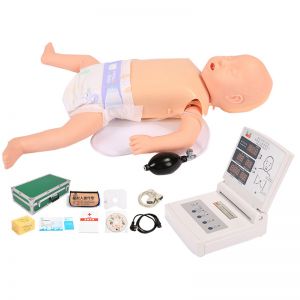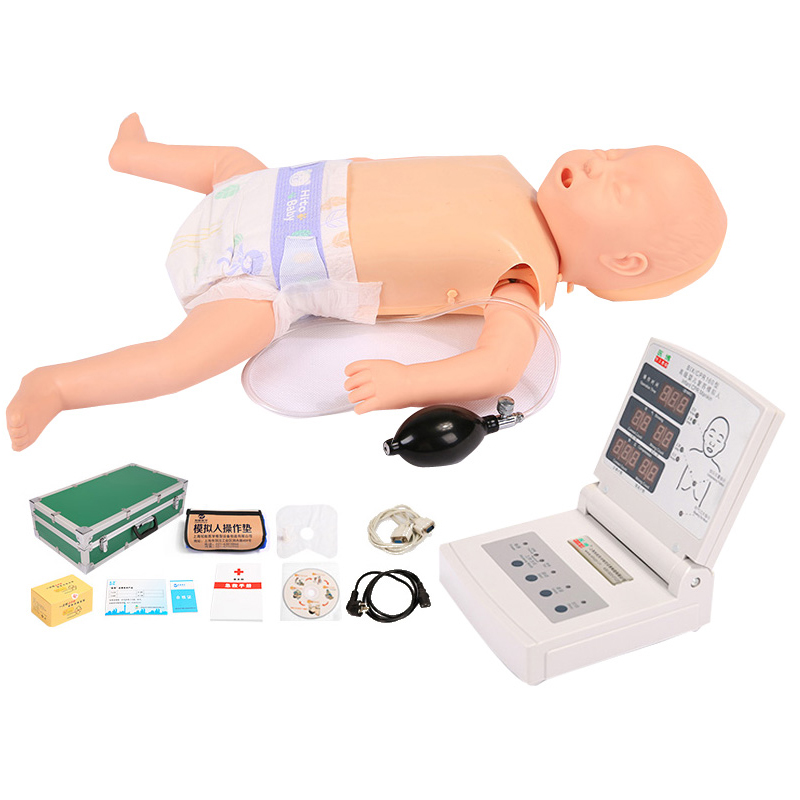ADA MED SUPPLY LIMITED
Phone:+86 19937901373
Tel:+86-0379-65160607
Email:adaanatomy@adaanatomy.com

Article tag: Baby first aid model medical first aid model

The Baby First Aid model provides medical professionals, first responders, paramedics and students with valuable hands-on opportunities that not only help to upgrade their skills, but can also save a baby's life in an emergency. The following are the main practical opportunities provided by the baby first aid model:
Cardiopulmonary resuscitation (CPR) training: The infant first aid model simulates a real CPR scenario, allowing the trainer to practice the correct compression position (usually 1/3 below the sternum), the compression depth (approximately 1/3 of the anterior-to-posterior diameter of the thorax), and the compression frequency (at least 100 times per minute). At the same time, the model can also allow the trainer to practice mouth-to-mouth or mouth-to-nose artificial respiration through blowing, and master the "30:2" ratio of pressing and blowing.

Airway management training: Airway management is essential in infant first aid. The infant first aid model can simulate the airway structure of infants, including epiglottis, vocal cords and trachea, so that the trainees can practice the skills of oral tube intubation, laryngeal mask ventilation and sputum aspiration. These exercises help improve the trainer's ability to quickly establish effective ventilation in emergency situations.
Iv infusion and puncture: The model usually has a simulated vein system, including arm vein, scalp vein, etc., for the trainer to perform IV infusion and puncture practice. Through repeated practice, the trainer can master the correct puncture technique, infusion speed control, and the prevention and treatment of complications.
Trauma treatment: Although the infant first aid model does not directly simulate trauma wounds, trainers can practice trauma treatment techniques such as bandaging, hemostasis and fixation based on the model. These exercises help the trainer respond quickly and accurately in the face of infant trauma.
Comprehensive simulation exercise: Many advanced infant first aid models also have comprehensive simulation functions, which can simulate a variety of emergency situations, such as suffocation, cardiac arrest, breathing difficulties, etc. Through comprehensive simulation exercises, trainers can test their first aid skills and decision-making ability in a near-real environment, and improve their ability to cope with complex situations.
Team training: Infant first aid often requires the collaboration of multiple medical personnel. The baby first aid model provides the team with the opportunity to practice together, helps the members to establish a tacit understanding, optimize the division of labor, and improve the overall first aid efficiency.
Feedback and evaluation: Many modern infant first aid models are equipped with advanced feedback systems that record the trainer's operation in real time and provide detailed evaluation reports. This feedback and evaluation information helps trainers understand their own shortcomings and make targeted improvements.
In summary, the Baby First Aid model provides a rich variety of practical opportunities for medical professionals and students to master key first aid skills and improve their ability to respond in emergency situations.